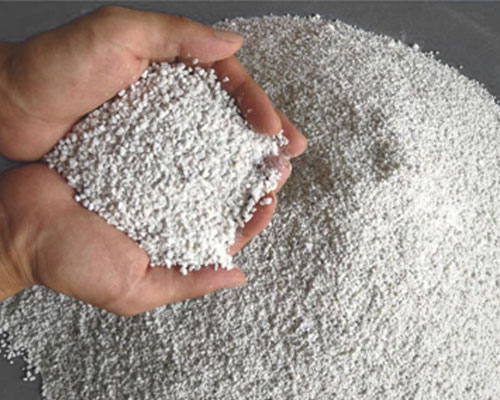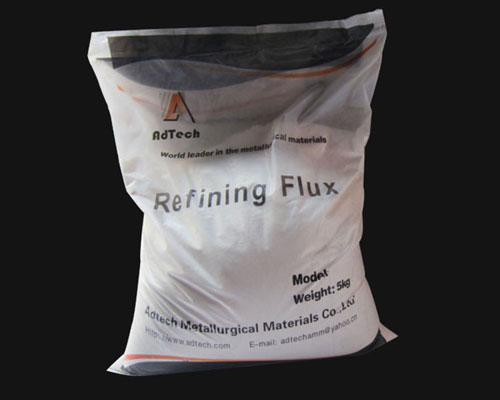Fluxes for aluminum casting are widely used in the production of primary aluminum and secondary aluminum to improve the quality of the melt and the recovery rate of metallic aluminum.
The fluxes for aluminum casting has four functions:
First, aluminum casting flux changes the wettability of the aluminum melt to the oxide (alumina), so that the aluminum melt is easily separated from the oxide (alumina), so that most of the oxide (alumina) Into the flux and reduce the content of oxides in the melt.
Second, the flux can change the state of the oxide film on the surface of the melt. This is because it can break the solid and dense oxide film on the surface of the melt into fine particles, which is beneficial for the hydrogen in the melt to escape from the particle gaps of the oxide film and enter the atmosphere.
Third, the existence of the flux layer can isolate the contact between water vapor in the atmosphere and the aluminum melt, making it difficult for hydrogen to enter the aluminum melt, and at the same time, it can prevent the melt from oxidizing and burning.
Fourth, the flux can absorb the oxides in the aluminum melt, so that the melt can be purified. In short, the role of flux refining to remove inclusions is mainly achieved by adsorption, dissolution and chemical interaction with oxide films and non-metallic inclusions in the melt.

There are many types of fluxes used in aluminum alloy smelting, which can be divided into two categories: covering agent and refining agent. Any flux used in the aluminum alloy melting process must meet the following conditions.
- The melting point should be lower than the melting temperature of the aluminum alloy.
- The specific gravity should be less than that of aluminum alloy.
- It can absorb and dissolve the inclusions in the melt, and can remove the gas from the melt.
- It should not chemically interact with metal and furnace lining. If it interacts with metal, it should only produce inert gas insoluble in metal, and the flux should be insoluble in molten metal.
- The moisture absorption should be small, and the evaporation pressure should be low.
- It should not contain or produce harmful impurities and gases.
- It must have proper viscosity and fluidity.
- Easy to manufacture: cheap.

